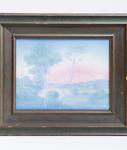 E.T. Hurley for Rookwood Pottery
E.T. Hurley for Rookwood Pottery Scenic Vellum Plaque
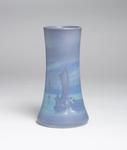 Fred Rothenbusch for
Fred Rothenbusch for Rookwood Pottery
Scenic Vellum Harbor Vase
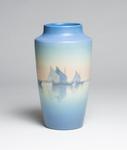 Carl Schmidt for Rookwood Pottery
Carl Schmidt for Rookwood Pottery Vellum Harbor Vase
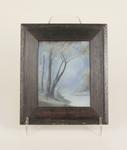 Ed Diers for Rookwood Pottery
Ed Diers for Rookwood Pottery Scenic Vellum Plaque
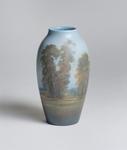 Ed Diers for Rookwood Pottery
Ed Diers for Rookwood Pottery Scenic Vellum Vase
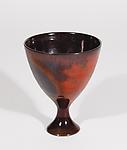 Gertrud and Otto Natzler
Gertrud and Otto Natzler Ceramic Vase
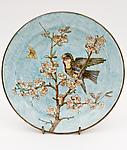 John Bennett
John Bennett Ceramic Charger
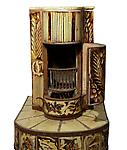 Henry Varnum Poor
Henry Varnum Poor Ceramic Stove
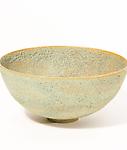 Gertrud and Otto Natzler
Gertrud and Otto Natzler Ceramic Bowl
Ed Diers for Rookwood Pottery
Scenic Vellum Plaque
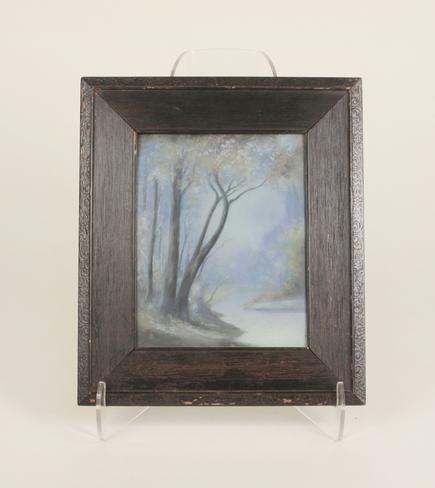
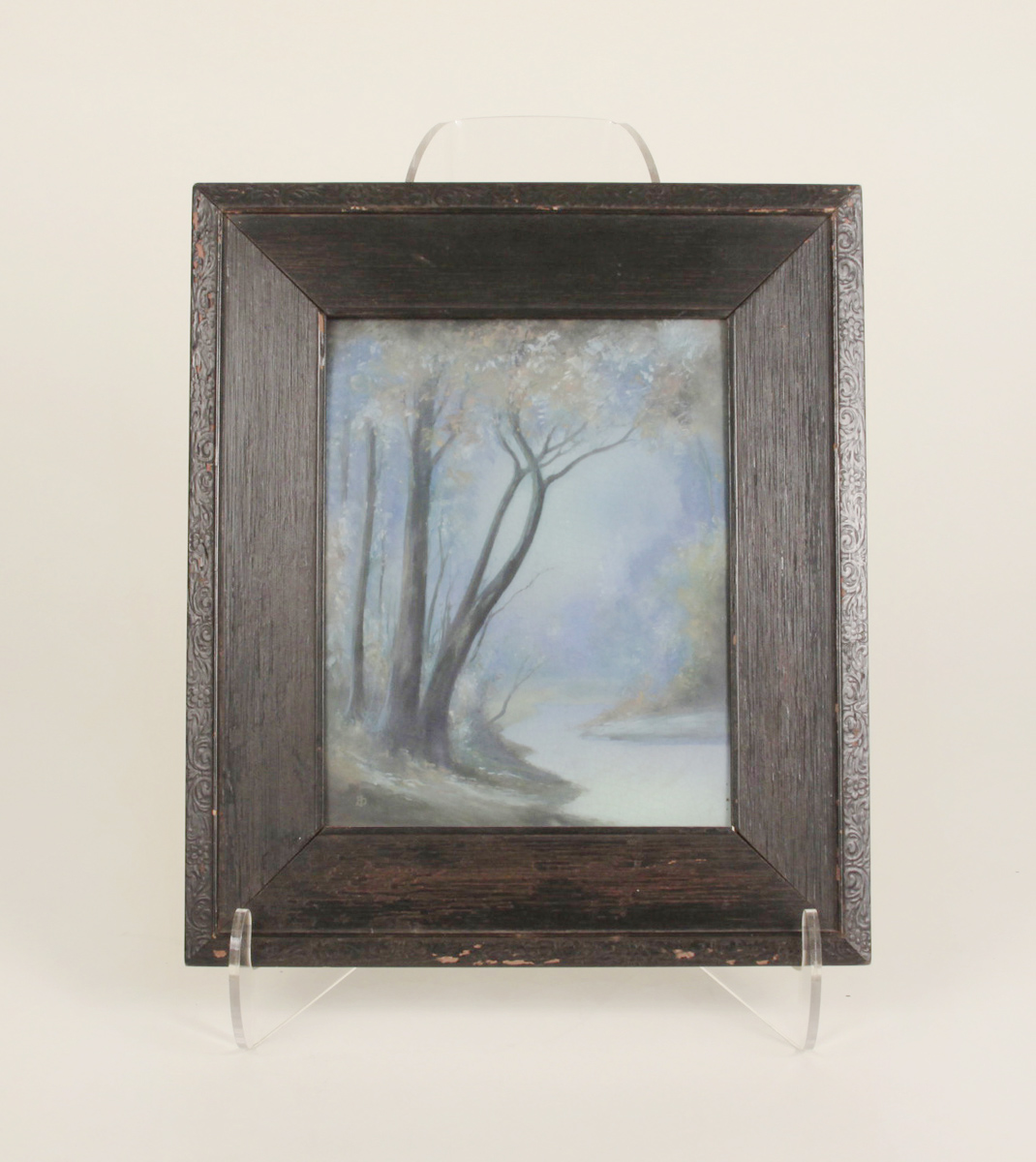
Height: 10 ¾ inches (27.31 cm)
Width: 8 ½ inches (21.59 cm)
Many of Rookwood’s ceramics, including decorated vases and architectural tiles, served both a utilitarian and aesthetic purpose. Ceramic plaques, on the other hand, offered the artists of Rookwood a flat, even surface, allowing them to work in a more painterly style. These artists were recognized as painters, not mere decorators of pottery, and they capitalized on the opportunities presented by the new medium to marry the traditions of oil painting and art pottery.
In 1904 Rookwood introduced the Scenic Vellum glaze, a hybrid between the transparent gloss glaze and a matte finish, which won a grand prize at the 1904 World’s Fair in St. Louis. The nature of the glaze when used on the flat plane of the plaques lent itself to scenes that reflected the American Tonalist movement: quiet landscapes marked by hazy atmospheres, a stream or pond bordered by trees, and scenes depicting shifting quality of light.
The Scenic Vellum landscapes were varied and often included scenes of the nearby Ohio River valley, the snowcapped mountains of the American West, and European vistas. The majority of plaques seen here, which fall into the first category, were likely painted with the aid of sketches, photographs, and from memory.
Traditional plaques were rarely larger than 11 inches by 8 inches due to issues with shrinkage and warping during firing.
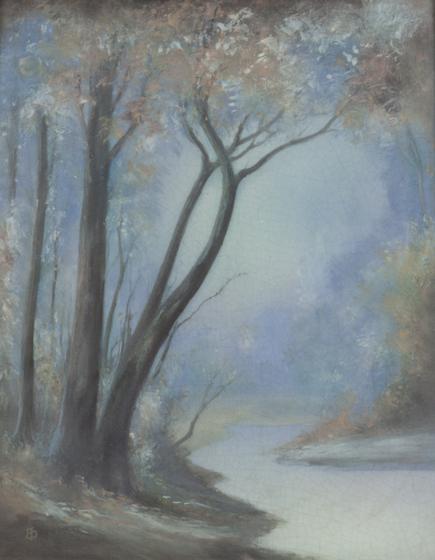
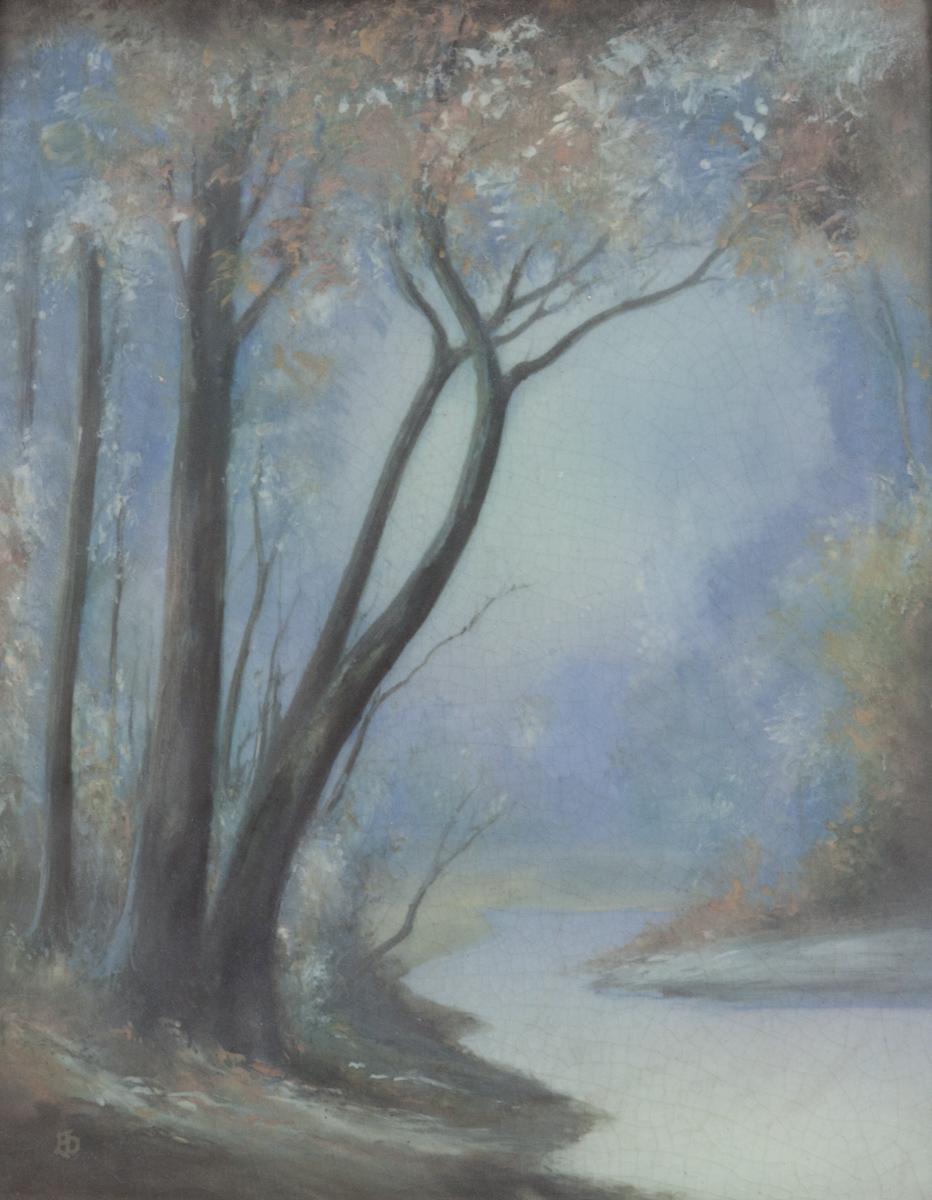
Height: 10 ¾ inches (27.31 cm)
Width: 8 ½ inches (21.59 cm)
Many of Rookwood’s ceramics, including decorated vases and architectural tiles, served both a utilitarian and aesthetic purpose. Ceramic plaques, on the other hand, offered the artists of Rookwood a flat, even surface, allowing them to work in a more painterly style. These artists were recognized as painters, not mere decorators of pottery, and they capitalized on the opportunities presented by the new medium to marry the traditions of oil painting and art pottery.
In 1904 Rookwood introduced the Scenic Vellum glaze, a hybrid between the transparent gloss glaze and a matte finish, which won a grand prize at the 1904 World’s Fair in St. Louis. The nature of the glaze when used on the flat plane of the plaques lent itself to scenes that reflected the American Tonalist movement: quiet landscapes marked by hazy atmospheres, a stream or pond bordered by trees, and scenes depicting shifting quality of light.
The Scenic Vellum landscapes were varied and often included scenes of the nearby Ohio River valley, the snowcapped mountains of the American West, and European vistas. The majority of plaques seen here, which fall into the first category, were likely painted with the aid of sketches, photographs, and from memory.
Traditional plaques were rarely larger than 11 inches by 8 inches due to issues with shrinkage and warping during firing.
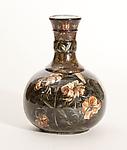 John Bennett
John Bennett 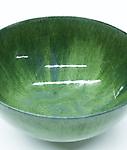 Gertrud and Otto Natzler
Gertrud and Otto Natzler